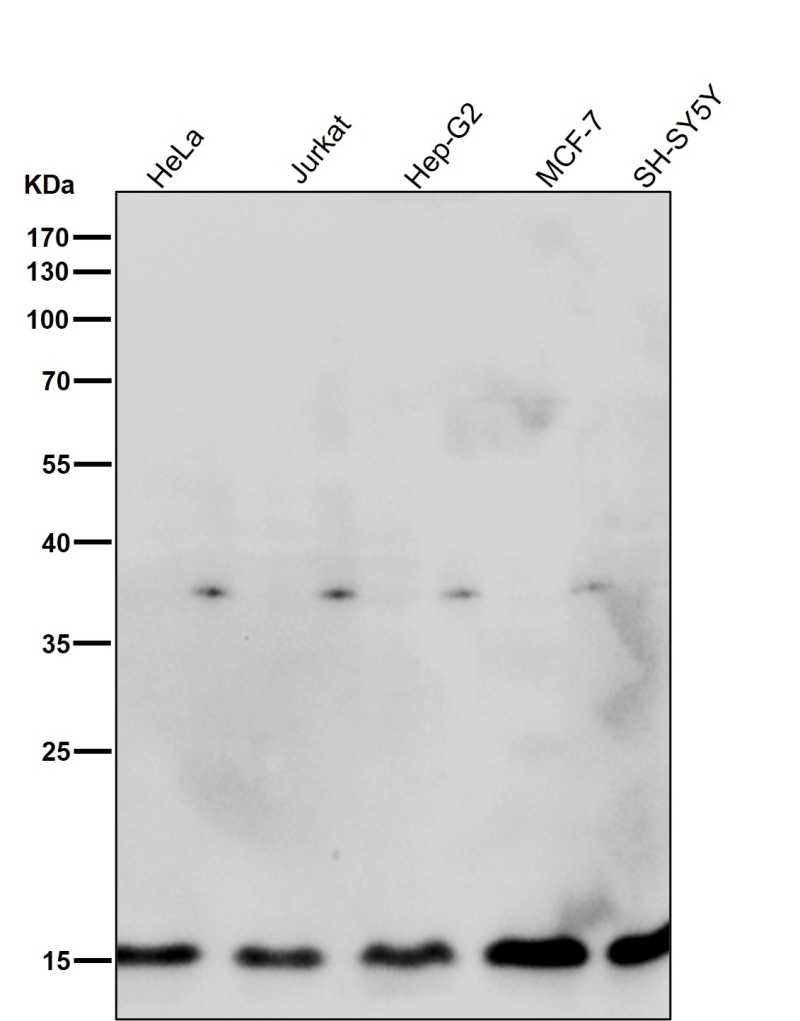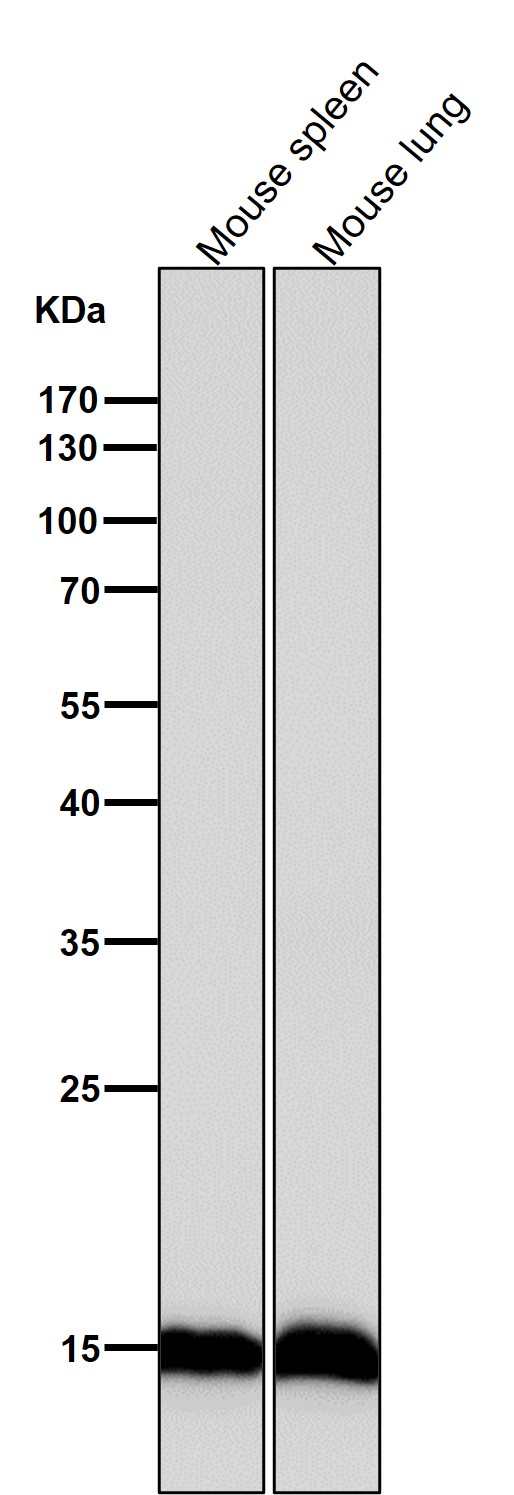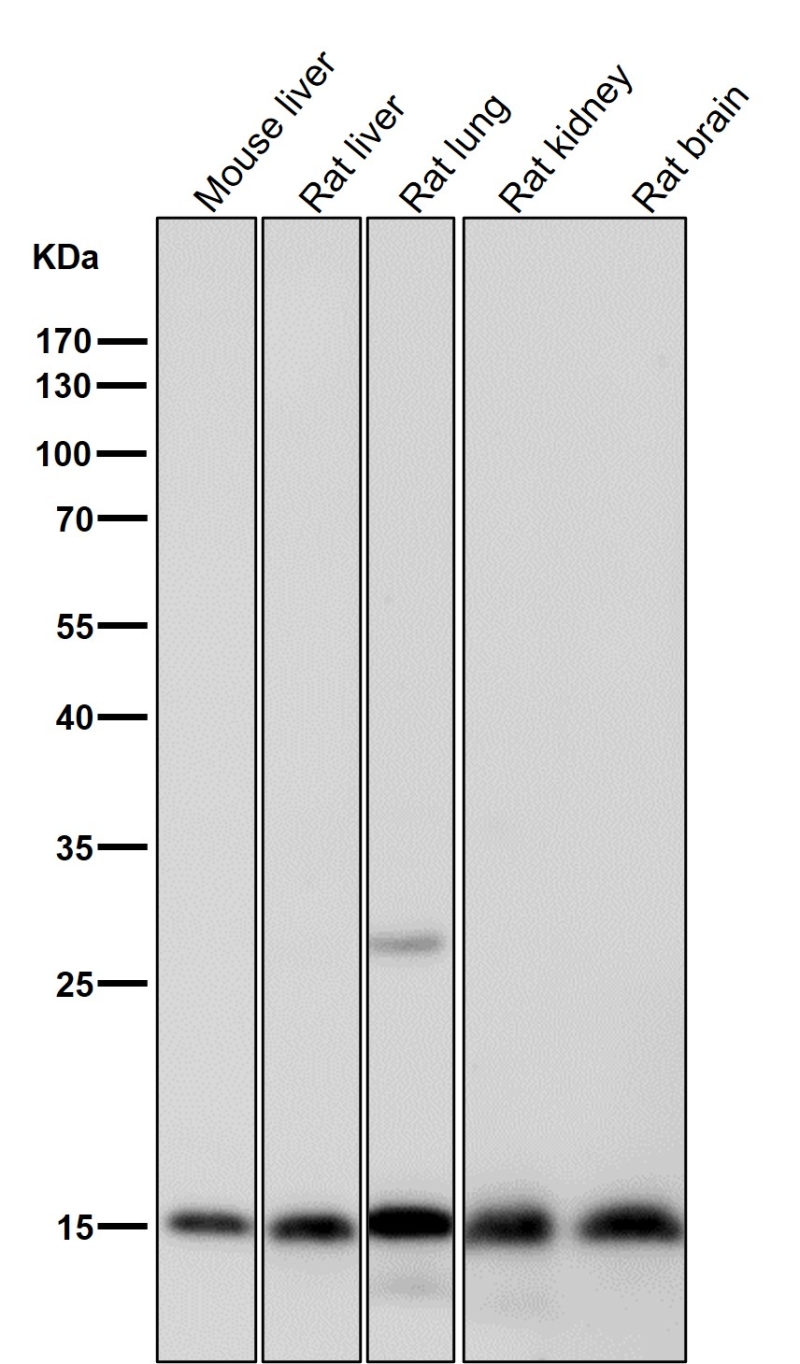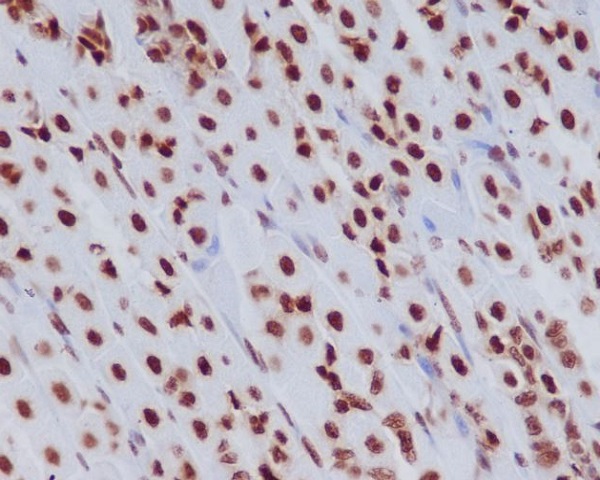



| WB | 咨询技术 | Human,Mouse,Rat |
| IF | 咨询技术 | Human,Mouse,Rat |
| IHC | IHC:1/100-1/200;IHF:1/50-1/200 | Human,Mouse,Rat |
| ICC | 1/50-1/200 | Human,Mouse,Rat |
| FCM | 咨询技术 | Human,Mouse,Rat |
| Elisa | 咨询技术 | Human,Mouse,Rat |
| Aliases | H3.3; H3.3A; H33_HUMAN ; H3F3; Histone H3.3 ; H3 histone family 3A; H3 histone family 3B;Histone H3.3 |
| WB Predicted band size | 15 kDa |
| Host/Isotype | Rabbit IgG |
| Antibody Type | Primary antibody |
| Storage | Store at 4°C short term. Aliquot and store at -20°C long term. Avoid freeze/thaw cycles. |
| Species Reactivity | Human,Mouse,Rat |
| Immunogen | A synthesized peptide derived from human Histone H3.3 |
| Formulation | Purified antibody in PBS with 0.05% sodium azide,0.05% BSA and 50% glycerol. |
+ +
以下是3篇关于Histone H3.3抗体的参考文献,按文献名称、作者及摘要内容简要概括:
---
1. **文献名称**: "Histone H3.3 maintains genome integrity during mammalian development"
**作者**: Jang, C.W., et al.
**摘要**: 该研究利用特异性Histone H3.3抗体,通过免疫荧光和Western blot技术,揭示了H3.3在胚胎发育中维持基因组稳定性的关键作用,证明其缺失会导致DNA损伤修复异常。
---
2. **文献名称**: "Distinct localization of histone H3.3 in human germ cells and preimplantation embryos"
**作者**: Akiyama, T., et al.
**摘要**: 通过开发高特异性Histone H3.3抗体,研究者发现H3.3在人类生殖细胞和早期胚胎中呈现独特的定位模式,提示其在染色质重编程和表观遗传记忆中的特殊功能。
---
3. **文献名称**: "H3.3 actively marks enhancers and primes gene transcription via opening higher-ordered chromatin"
**作者**: Chen, P., et al.
**摘要**: 研究使用ChIP-seq结合H3.3抗体,证明H3.3优先富集于增强子区域,并通过调控高阶染色质结构促进基因转录激活,为表观遗传调控机制提供了新见解。
---
**备注**:以上文献信息为示例性质,具体引用时请核对原始文献的准确性。如需近期研究,可检索PubMed或Google Scholar以关键词“Histone H3.3 antibody” + “ChIP-seq/immunofluorescence”进一步筛选。
Histone H3.3 is a replication-independent histone variant encoded by two distinct genes, *H3F3A* and *H3F3B*, which replace canonical histones H3.1 and H3.2 in a DNA synthesis-independent manner. Unlike its canonical counterparts, H3.3 is incorporated into chromatin throughout the cell cycle, particularly at transcriptionally active regions, regulatory elements (e.g., promoters, enhancers), and heterochromatic sites like telomeres. Its dynamic deposition is mediated by chaperones such as HIRA and DAXX/ATRX, enabling roles in epigenetic regulation, transcriptional activation, and genome stability.
H3.3-specific antibodies are critical tools for studying its localization, function, and involvement in cellular processes such as differentiation, development, and aging. These antibodies typically target unique residues or post-translational modifications (PTMs) that distinguish H3.3 from H3.1/H3.2. For example, H3.3 contains amino acid substitutions at positions 87 (alanine vs. serine in H3.1) and 90 (glycine vs. methionine), enabling selective detection. Researchers use these antibodies in techniques like ChIP-seq, immunofluorescence, and Western blotting to explore H3.3's role in gene regulation, DNA repair, and disease contexts, including cancer and neurodevelopmental disorders.
However, antibody specificity must be rigorously validated due to high sequence similarity among H3 variants and PTM cross-reactivity. H3.3 dysregulation has been linked to gliomas, pediatric bone cancers, and other malignancies, underscoring the antibody's utility in both basic and translational research. Its application continues to advance our understanding of chromatin dynamics and epigenetic mechanisms in health and disease.
×